-
Posts
12128 -
Joined
-
Days Won
324
Ric last won the day on July 28
Ric had the most liked content!
Previous Fields
-
Gender
Not Telling
-
Please type the following
572
Recent Profile Visitors
7746 profile views
Ric's Achievements
-
@Alta When you consider those bright Kokomo colors, think about the most vivid and bright pink or red lipstick you've ever seen and you'll be close.
-
It's an unusual marble and a nice peewee too, IMO. And I am pretty confident it is not a Vitro. IMO, the colors aren't as they were intended and they're laid on the marble in a weird way too. But if you imagine that thin light brown color is as it should be (even though it's probably not), and the thicker red/brown ribbon is supposed to be the same as the nice orange one, you would see a flip-flopped light brown / blue / orange Peltier Rainbo. No doubt, this would be way easier to explain if we were sitting somewhere looking at this marble together, which is just another reason that marble shows are, hands-down, the best venue for learning about marbles. 🙂 And just FYI, that little mess of light brown showing on the top of the marble in the larger pic goes to the left side of that seam. This sort of thing is very common on Plets.
-
Crazy, I have not seen one either. It's like a Vitro Helmet with nothing but the stripe. lol
-
The only one I think may be Akro (or maybe Master) is the first on the left, above. The third from the left looks like a Parrot (a Baby Parrot if it's player size). If the 5th one has only 3 colors it would be a Parakeet or a Baby Parakeet, depending on size. I'd need another view or two before I could say much about the others (the 6th is particularly interesting - not sure I'd even call it Vitro from this single view). The above are pretty cool Type I Tiger Eyes with two yellow equatorial ribbons. They are quite a bit less common than those with two different colored equatorial ribbons. Like the Type I Tiger Eyes below - the big ones are Type I TEs too. The one far right just got a little wonky, which is not uncommon for larger sizes. Vitro Opals usually have two colors and light white on an opalescent base glass. I don't think the ones below fit the bill. They look more like Conqueror variants to me. Sometimes, when your looking for opalescence, light coming through the colored patch can make you think they might be opalescent. So be aware of that when you're backlighting looking for it. That's a nice group of Bull's Eyes you're showing up there too. I hope this helps. 🙂
-
@crashbelt @Royal3 @Alta @Chad G. Wow, you've been posting some great marbles since I was last here! Here's an 11/16" marble I've never seen before. I'm calling it a Caramel Ribbon Swirl with Mica. Caramel Swirls with Mica are a thing, but the ribbons in this one are very similar to what you would find in a clear glass ribbon lutz. No lutz here, unfortunately, but it's a pretty rare find and pretty cool IMO. I thought about adding "end of cane" since the ribbons thin out and lose their structure before they reach the faceted pontil. I even considered "end of day" since it's such an oddball - no sense getting carried away though. 😉 Please let me know if you've seen another or think I might be off with my description. 🙂
-
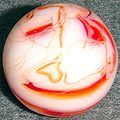
Matsuno and Seike, Japanese veneered marbles
Ric replied to shiroaiko's topic in General Marble & Glass Chat
Thanks for posting this, Aiko. It's nice to finally get some definitive information about these marbles. This 40 ct. box of 9/16" Matsuno's was packaged with the Ohio Arts Chinese Checkers game. We called the marbles "Mt. Fujis"back in the day. 🙂 -
Thank you for posting this, Sue. I had not heard about Buddy's (@roany poany) passing. I only met him a few times long ago, but he was definitely one of the good guys - always quick with a smile and a corny joke. My heart goes out to his family and all who loved him. He will be missed.
-
This is a rare German marble, IMO. At 1-3/8" it may be the largest cane-cut slag I've seen.
-
Two Blue Skies and a Stormy Sky.
-
This is a nice hand-gathered slag. Striped transparent marbles have two seams and colors (not white) on the surface.


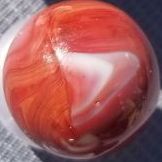
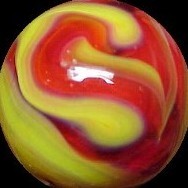

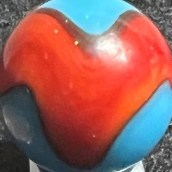
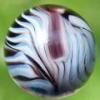
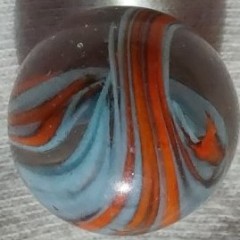


.thumb.jpg.7280b39896dc0a0fb528c03fb1f30dd0.jpg)







